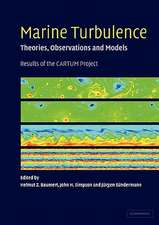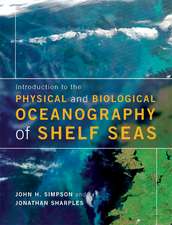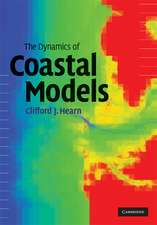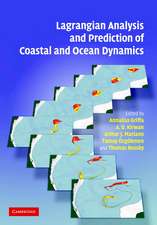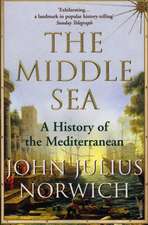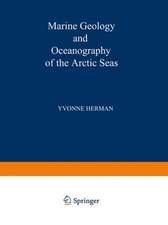Use of Proxies in Paleoceanography: Examples from the South Atlantic
Editat de Gerhard Fischer, Gerold Weferen Limba Engleză Paperback – 23 oct 2012
| Toate formatele și edițiile | Preț | Express |
|---|---|---|
| Paperback (1) | 2109.41 lei 6-8 săpt. | |
| Springer Berlin, Heidelberg – 23 oct 2012 | 2109.41 lei 6-8 săpt. | |
| Hardback (1) | 2113.82 lei 6-8 săpt. | |
| Springer Berlin, Heidelberg – 2 noi 1999 | 2113.82 lei 6-8 săpt. |
Preț: 2109.41 lei
Preț vechi: 2572.45 lei
-18% Nou
Puncte Express: 3164
Preț estimativ în valută:
403.64€ • 422.49$ • 335.95£
403.64€ • 422.49$ • 335.95£
Carte tipărită la comandă
Livrare economică 31 martie-14 aprilie
Preluare comenzi: 021 569.72.76
Specificații
ISBN-13: 9783642636813
ISBN-10: 3642636810
Pagini: 748
Ilustrații: X, 735 p. 339 illus., 20 illus. in color.
Dimensiuni: 155 x 235 x 39 mm
Greutate: 1.03 kg
Ediția:Softcover reprint of the original 1st ed. 1999
Editura: Springer Berlin, Heidelberg
Colecția Springer
Locul publicării:Berlin, Heidelberg, Germany
ISBN-10: 3642636810
Pagini: 748
Ilustrații: X, 735 p. 339 illus., 20 illus. in color.
Dimensiuni: 155 x 235 x 39 mm
Greutate: 1.03 kg
Ediția:Softcover reprint of the original 1st ed. 1999
Editura: Springer Berlin, Heidelberg
Colecția Springer
Locul publicării:Berlin, Heidelberg, Germany
Public țintă
ResearchCuprins
Clues to Ocean History: a Brief Overview of Proxies.- Surface Water Circulation.- Sea-Surface Temperature Estimations Using a Modern Analog Technique with Foraminiferal Assemblages from Western Atlantic Quaternary Sediments.- The Distribution of Living Planktic Foraminifera in Relation to Southeast Atlantic Oceanography.- Coccolithophores as Indicators of Ocean Water Masses, Surface-Water Temperature, and Paleoproductivity — Examples from the South Atlantic.- Calcareous Dinoflagellate Cysts as Paleo-Environmental Tools.- Oxygen Isotope Values of Planktic Foraminifera: A Tool for the Reconstruction of Surface Water Stratification.- Stable Isotopes of Pteropod Shells as Recorders of Sub-Surface Water Conditions: Comparison to the Record of G. ruber and to Measured Values.- On the Reconstruction of Paleosalinities.- Bottom- and Deep Water Circulation.- Stable Carbon Isotopes in Benthic Foraminifera: Proxies for Deep and Bottom Water Circulation and New Production.- Carbonate Dissolution in the Deep-Sea: Methods, Quantification and Paleoceanographic Application.- Kaolinite and Chlorite as Tracers of Modern and Late Quaternary Deep Water Circulation in the South Atlantic and the Adjoining Southern Ocean.- Paleoproductivity and Nutrients.- Organic Carbon and Carbonate as Paleoproductivity Proxies: Examples from High and Low Productivity Areas of the Tropical Atlantic.- Biogenic Barium as a Proxy for Paleoproductivity: Methods and Limitations of Application.- Variability in Export Production Documented by Downward Fluxes and Species Composition of Marine Planktic Diatoms: Observations from the Tropical and Equatorial Atlantic.- Reliability of the 231Pa/230 Th Activity Ratio as a Tracer for Bioproductivity of the Ocean.- Sediment Redistribution, 230Thex — Normalization andImplications for the Reconstruction of Particle Flux and Export Paleoproductivity.- The South Atlantic Carbon Isotope Record of Planktic Foraminifera.- Reconstruction of Surface Ocean Nitrate Utilization Using Stable Nitrogen Isotopes in Sinking Particles and Sediments.- CO2 in Oceans and Atmosphere.- Alkenone ?13C as a Proxy for Past PCO2 in Surface Waters: Results from the Late Quaternary Angola Current.- Reassessing Foraminiferal Stable Isotope Geochemistry: Impact of the Oceanic Carbonate System (Experimental Results).- Implications of a Carbonate Ion Effect on Shell Carbon and Oxygen Isotopes for Glacial Ocean Conditions.- Atmospherical Circulation.- Pollen and Spores in Marine Sediments from the East Atlantic — A View from the Ocean into the African Continent.- Terrestrial Organic Matter in Marine Sediments: Analytical Approaches and Eolian-Marine Records in the Central Equatorial Atlantic.- Environmental Magnetism.- The Magnetic View on the Marine Paleoenvironment: Parameters, Techniques, and Potentials of Rock Magnetic Studies as a Key to Paleoclimatic and Paleoceanographic Changes.- Using Rock Magnetic Proxy Records for Orbital Tuning and Extended Time Series Analyses into the Super- and Sub-Milankovitch Bands.- Geomagnetic Events and Relative Paleointensity Records — Clues to High-Resolution Paleomagnetic Chronostratigraphies of Late Quaternary Marine Sediments?.- Modelling.- Simulation of Oxygen Isotopes in a Global Ocean Model.- Reconstructing and Modelling the Last Glacial Maximum: Beyond CLIMAP.- Data Management.- Data Management of Proxy Parameters with PANGAEA.
Caracteristici
Compilation of most important palaeoceanographic data Combination of palaeoceanographic and palaeoclimatological results Includes supplementary material: sn.pub/extras

